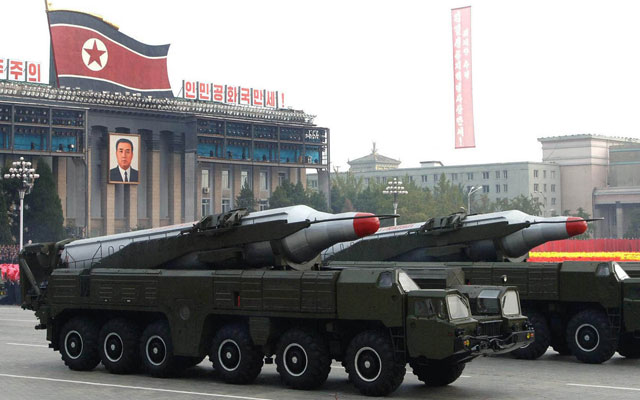North Korea Threat: There Is No Substitute for a Strong U.S. Missile Defense
Michaela Dodge /
Today, Secretary of Defense Chuck Hagel announced that the United States will shore up its missile defense system. Yet again, the Obama Administration is proving critics of its missile defense program correct.
The U.S. will deploy additional 14 Ground-Based Midcourse Defense (GMD) interceptors in Alaska, deploy additional radar in Japan, and conduct an environment impact study for a missile defense site on the East Coast. The Administration also announced the restructuring of the Standard Missile 3 Block IIB program.
Interceptors in Alaska will provide additional coverage in the case North Korea makes good on its statements that it would launch a “pre-emptive” nuclear strike on the United States.
When the Administration took office four years ago, it scaled down the number of interceptors protecting the U.S. from 54 to 30. This included cutting 10 interceptors in Poland and 14 in Alaska. The Administration justified its step by saying that the missile defense threat has not progressed as fast as the Bush Administration expected—this despite the fact that both North Korea and Iran have been very public about their efforts to develop long-range ballistic missile capabilities.
The Obama Administration defends its move by pointing out that North Korea four years ago didn’t have the ballistic missile capability it has today, including rail-mobile missiles that are hard to detect. This is a flawed argument. These interceptors will not be deployed until fiscal year 2017. Had the Administration proceeded with the original plan and deployed 44 GMD interceptors on U.S. soil, the defense would already be ahead of the threat. In addition, restarting the program now after the President cut it earlier will be more expensive.
It is only appropriate that the Administration is taking defensive measures in response to North Korea’s aggressive statements and ballistic missile capability improvements. GMD interceptors do not have the capability to “hit” North Korea; they can hit only enemy missiles en route toward their victims. It takes only 33 minutes for a missile to reach the U.S. from anywhere in the world.
The President also cut some of the most promising missile defense systems—such as the Multiple Kill Vehicle, the Kinetic Energy Interceptor, and the Airborne Laser—that could help to mitigate the threat.
In addition, the Administration can give the Aegis missile defense system capability to shoot down intercontinental-range ballistic missiles in the late-midcourse phase of their flight. The Administration would be able to accomplish this by arranging proper command-and-control arrangements and providing adequate tracking capability.
These programs should all be on the table now that the Administration publicly acknowledged that the North Korean threat is advancing.

